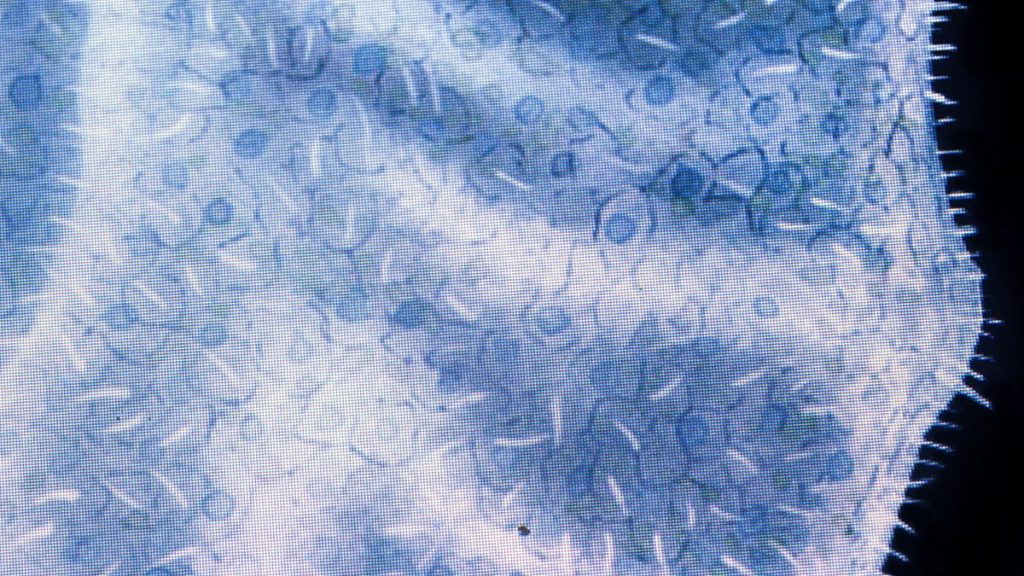A sea animal so simple that it looks like a blobby pancake may hold the secret to the origin of neurons.
Placozoans are one of the five major branches of animals, along with bilaterians (which include everything from worms to humans), cnidarians (corals and medusas), sponges and ctenophores (comb jellies). They’re the most basic of the bunch, consisting of millimeter-long blobs of cells without organs or body parts. They move through the water using cilia — tiny hair-like structures — absorb nutrients by engulfing particles, and reproduce by simply budding off new offspring.
Placozoans diverged from other animals about 800 million years ago, and just a few species are known. But new research has found that these unassuming creatures may hold the key to the eventual evolution of the nervous system. Placozoans, it turns out, contain cells that show striking similarities to neurons, even though they are nowhere near as complex.
“Our results fit into the idea that neurons are a very complex cell type that has evolved in a gradual way,” study author Xavier Grau-Bové, a postdoctoral researcher at the Centre for Genomic Regulation in Barcelona, told Live Science. “We are maybe seeing the remnants of something that, when we diverged with placozoans, was sort of an ancestral neuron with likely a different function.”
Related: Decades-old question surrounding the start of the tree of life could finally be solved
Grau-Bové and his colleagues embarked on a systematic genetic study of all the cell types in placozoans. The cell biology of these little organisms has only rarely been studied, he said: “We are starting from virtually nothing.”
The researchers mapped out nine main cell types and several intermediate cell types, but the most intriguing turned out to be a subset called peptidergic cells. These cells contribute to placozoans’ movements by releasing short chains of amino acids called peptides. Stimulation with different peptides causes placozoans to change their shape and movement; for example, they might flatten, undulate or crinkle up, according to 2018 research.
Microscopy image of nuclei, colored by depth, of one of the four species of placozoan for which the researchers created a cell atlas for. (Image credit: Sebastian R. Najle/Centro de Regulación Genómica)
The peptidergic cells showed surprising similarities to the neurons that make up the nervous systems of animals like humans. In particular, they have the proteins that build what scientists call the “pre-synaptic scaffold.” Neurons communicate by releasing chemicals across a gap called a synapse. Peptidergic cells don’t have synapses — but they do have similar protein complexes to those in neurons that enable chemicals to build up and then be released.
“We do not yet know exactly what this scaffold is doing in these organisms,” Grau-Bové said. “We just know that it is being expressed there.”
The team found that these peptidergic cells developed in a similar way to neurons. They also observed cell-to-cell messaging using neuropeptides, which are amino acid chains used by neurons in their own messaging systems.
The origin of neurons remains a controversial question among biologists. Sponges don’t have them, and comb jellies have neurons that look extremely different from other animals‘, while cnidarian and bilaterian nervous systems have more in common. It’s not clear whether the common ancestor of all these animals had a nervous system and then some lineages, like sponges, dropped it, or if the nervous system evolved separately in multiple lineages after they diverged from one another.
More studies on ctenophores and their oddball nervous systems will be necessary to answer that question, Grau-Bové said, but the new research suggests a slow-and-steady evolution of neurons from a simpler cell specialized for communication and messaging.
The results were published today (Sept. 19) in the journal Cell.

